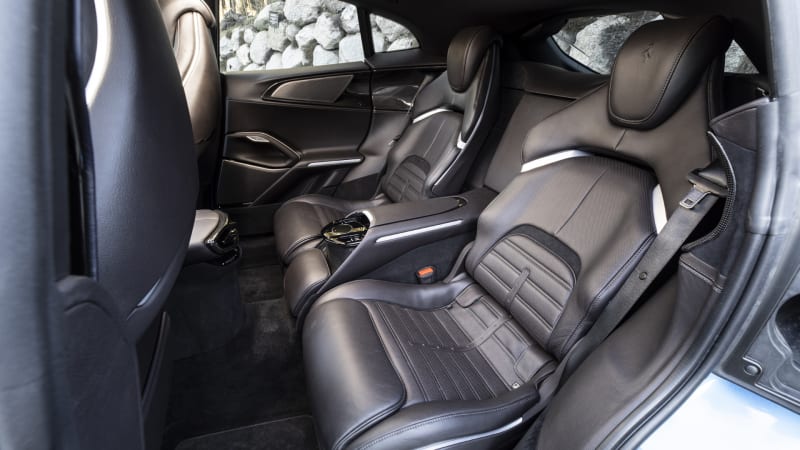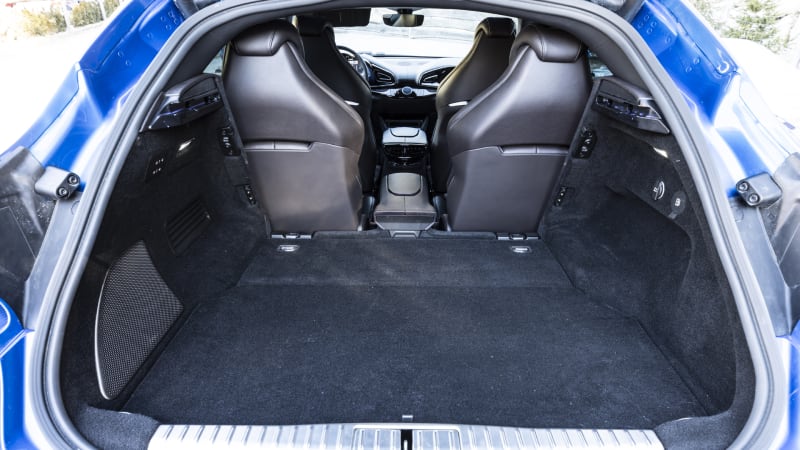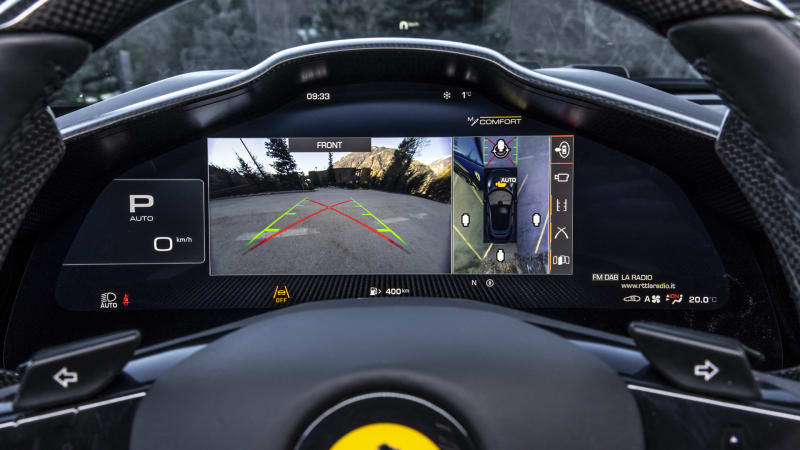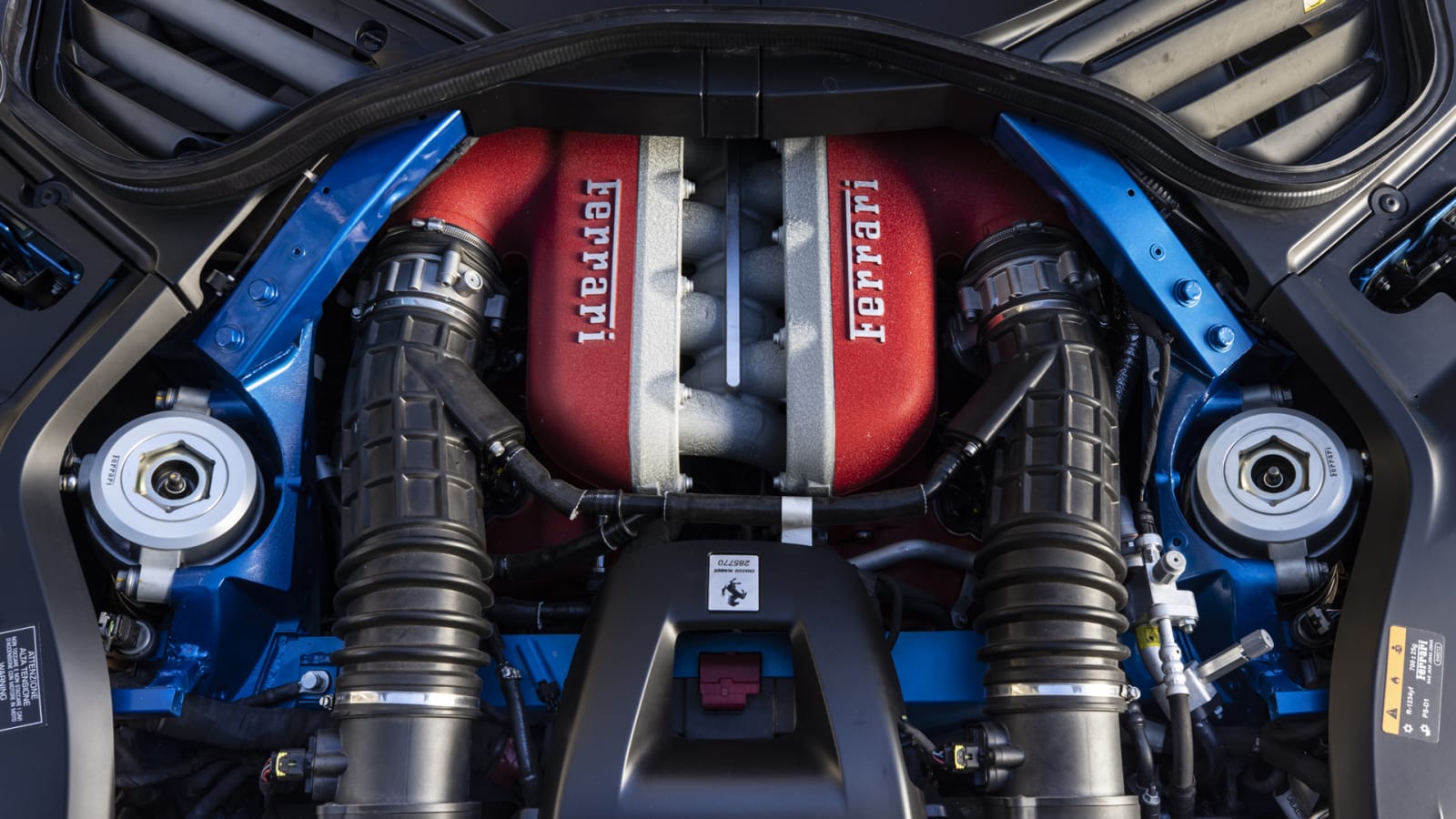GARGNANO, Italy – Driving the Ferrari Purosangue for a ski day in the Dolomites makes things as clear as the northern Italian sky: If the plan is to make onlookers swivel in their ski boots, the Purosangue instantly becomes the fastest, most desirable gondola on earth. Now, all it takes is $398,350, plus roughly $50,000 to $100,000 in options, and you too can ferry a partner and adorably Moncler-clad children to frolic on the slopes of Aspen, Chamonix or here in Italy at Campiglio Dolomiti di Brenta. Just know that you may still need a roof rack despite driving history’s first Ferrari SUV.
Now, if you’re still crying about Ferrari building an “SUV,” please stop: You’re sounding like that grump who’s still shaking a fist over Porsche Cayennes, Alfa Stelvios and Mustang Mach-Es. Maybe you’re the same grump. Look, the world started flipping to SUVs about the time primitive Explorers began flipping nearly 25 years ago. The breed has morphed and evolved so many times that the old pejorative “SUV” barely describes most of today’s car-based crossovers, which hew closer to hatchbacks and wagons than Hummers and Wagoneers. That is definitely the case with the Purosangue.
Here in Italy, stylish Ferrari executives cringe only briefly at the catch-all “crossover” word, before acknowledging the designer shoe mostly fits. And one look at this Ferrari’s lightly lifted silhouette or the red-painted valve covers on its naturally aspirated V12, makes clear the Purosangue is more a genre-blurring Wonder Wagon than an SUV. A second look, this time in the scrawny cargo area behind a pair of exotically formed rear seats, suggests hatchback — at 16.7 square feet, it’s theoretically smaller than every subcompact SUV Autoblog has cargo tested. That still makes it the largest trunk found in a full-production Ferrari, and while Ferrari has a storied history of 2+2 models, including the most recent GTC4 Lusso, that “+2” typically meant two custom suitcases. Or in rare circumstances, the limber son of a divorced Monaco playboy. So in another Ferrari first, the Purosangue legitimately beckons humans into (heated, reclining) back seats, and without unduly stretching the wheelbase and spoiling its provocative front-engine, shark-snout proportions.
The solution is a bravura pair of rear-hinged suicide doors that motor fully open or shut with the tug of an exterior tab or the press of an interior button. A single, massive rear hinge supports each open-sesame portal. Once aboard, 6-foot adults find a reasonable perch, albeit with their heads partly inside the window cavity that borders the headliner. Again, though, after 75 years of Ferraris, this is the first that lets owners even think about putting adult friends and family in the back to enjoy a fantasy ride or dinner-for-four.
A cheeky colleague shows up at our media drive in a Lamborghini Urus Performante, but the attempt at Italian one-upping only clarifies how easy the choice would theoretically be (more on that later). The Urus is fast and brutally capable, with 641 horses versus the Ferrari’s 715, and costs $133,350 less to start. But the Lambo looks like a battering hippo (or gussied-up Audi Q8) next to the Ferrari’s sleek snow leopard. Plus, the Purosangue has a 6.5-liter, naturally aspirated, hand-built Ferrari V12, not a twin-turbo V8 sourced from Audi and Volkswagen Group. Purosangue means “thoroughbred” or more literally “pure blood” in Italian; it’s a name that isn’t without merit. Throw in the first application of Multimatic’s new active suspension, Ferrari’s trick three-speed front transaxle, four-wheel steering and an encyclopedia of F1-derived tech found on previous Ferraris, and you get the idea that this is more than the usual ultra-luxury SUV.
Inside, a slim console bisects the two rear seats, with no five-passenger capability. The console integrates a cool pop-up rotary knob with an embedded screen, repeated on the dashboard, that manages climate controls. Up front, that knob underscores a dual-cockpit layout that eschews any center screen. That puts the focus on design, materials and human-centric performance, including a stunning pair of mirror-matched binnacles for driver and passenger. The expanded cabin, surrounded by an aluminum-intensive chassis and weight-saving carbon-fiber roof (or optional electrochromic roof) makes room for the best audio system, by far, in any Ferrari: The Burmester audio system, in a first collaboration with the German audiophile brand, brings 1,420 watts and 21 speakers, including fancy ribbon tweeters and a subwoofer.
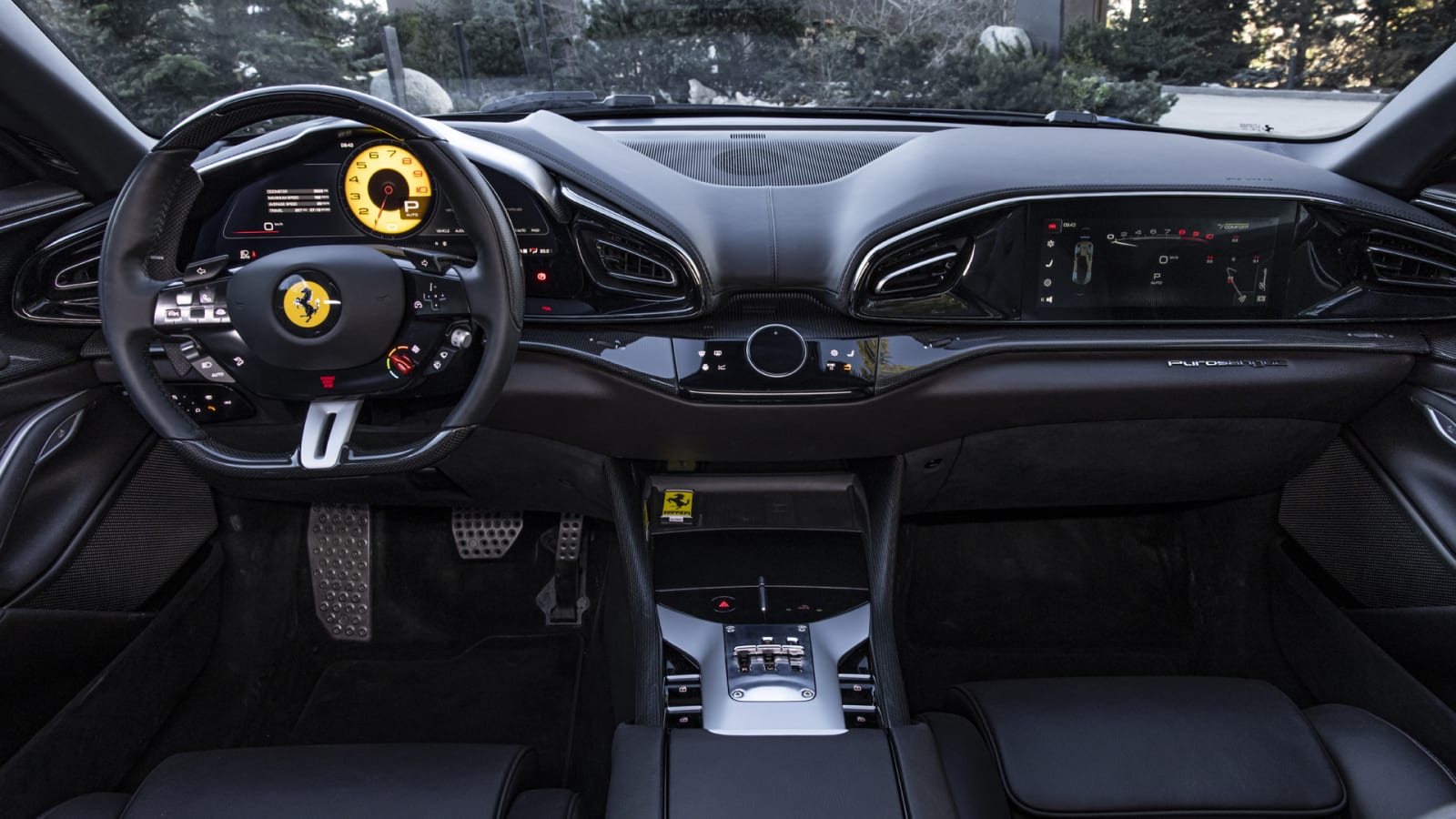
The Purosangue adopts the all-digital gauges and HMI from the rest of the Ferrari range, including a 10.3-inch passenger-side screen with expanded functionality. The driver’s screen is dominated by a 1s and 0s version of Ferrari’s classic yellow tachometer that showcases the V12 crescendo to its 8,250-rpm peak. But Ferrari asks that single screen to do way too much, including housing the phone-based navigation — wireless Apple CarPlay is onboard and wireless Android Auto is coming. There is no onboard sat-nav. Worse, that screen is managed by a fiendishly awkward thumb doohickey on the dramatic carbon-fiber-rimmed steering wheel. It’s as hapless as it is haptic, stubbornly resisting commands or jumping past a desired on-screen icon. A simple scroll wheel and switch pad would be an easy improvement. Even settling on a radio station or goofing with the navigation becomes a worrying exercise in eyes-off-the-road distraction. That’s exactly what you don’t want in a half-million-dollar, 715-hp “SUV.”
That those 715 horses come from a naturally aspirated V12 is surprising, as many assumed the 812 Superfast would have the last Ferrari 12 cylinder, at least without a hybrid. Now it’s the Purosangue that has the clock ticking. Remember that Ferrari produced nothing but V12 models from its seminal, 1.5-liter 125S in 1947, up to its Dino-badged 308 GT4 that brought the brand’s first V8 in 1974.
As in the 812 and various predecessors, the Purosangue’s glorious V12 sits entirely behind the front axle, and sends power through a rear transaxle. A new eight-speed DCT gearbox trims 12 pounds from the 812’s seven-speed, despite the additional cog. It matches the 296 GTB’s gear ratios, including shorties in first through sixth, and a long seventh and eighth for easier cruising and reduced fuel consumption. Still, carrying nearly 1,000 more pounds than the 812 Superfast and with added AWD, the Purosangue will be a serious glutton for premium unleaded — it showed me 10-12 mpg in spirited driving. Ferrari posits a curb weight of 4,774 pounds, about 100 fewer than a Urus.
The Purosangue actually drives a lot like an 812 with a lift in its loafers and more poundage around its waist. It evinces the same double-agent personality as you toggle through steering-wheel Manettino settings: One part GT smoothie, one part ruthless assassin that could get it, and its wingman, nailed by the cops in an instant. Ferrari cites a 3.3-second burst from 0-62 mph (100 kph), 10.6 seconds to 124 mph (200 kph) and a top speed beyond 193 mph. A few neck-snapping samples of automated Launch Control confirm our galloping progress.
Ferrari summons all its estimable chassis magic to make the Purosangue more agile and fun than it has any right to be. Up front, a compact three-speed transmission, less than 7 inches long, shunts torque between front wheels to boost traction and quell understeer and inertia. We segue to a snow-choked dirt lane, directly below the express gondola for the Madonna di Campiglio ski area, which Ferrari has requisitioned to show off the Purosangue’s wintry skills. After a shotgun-seat recon with an Italian pro rally driver — yep, the Purosangue can definitely drift between trees — I take the wheel and find immediate grip and planted confidence.
The only scary part is wondering who, in the real world, is going to hose snow and ice from those hulking, staggered wheels, with 22-inch forged alloys up front and 23’s in the rear. A sympathetic glance at our slushy Ferrari reveals its myriad air-management strategies. What looks like decorative SUV body cladding are actually composite, floating wheel arches that help smooth air turbulence. A subtle roof spoiler directs air through dual channels, and helps clear the wiperless rear glass.
Ferrari’s active suspension tech deserves mention, since it’s never been tried on a car before. In collaboration with the Canadian gurus of MultiMatic — perhaps best known as constructor of the Ford GT — its TASV (TrueActive SpoolValve) dampers incorporate a worm gear and screw inside the dampers. Networked into a vast range of F1-derived systems, the dampers’ 48-volt electric motor adjusts body roll, yaw, pitch, and dive in 50-millisecond intervals. That eliminates any need for air springs or weighty, relatively one-note anti-roll bars. For the first time, a car’s body operates on a fully independent, multi-directional control circuit rather than the suspension and wheels. The worm gear and screw respond to handling forces and apply active force to the body or wheels to counter them, even as wheels drop into holes or the suspension chatters over a washboard surface.
Storm into a curve, and the Purosangue automatically lowers itself and dispatches every road imperfection, even as the body stays uncannily flat. A practical upshot is that drivers can leave the Ferrari in its softest suspension setting — even on track — with zero loss of performance. There’s even now a separate push-button suspension control on the Manettino, though the only reason to choose a firmer setting is if you’d like to feel more bumps and jostles through your hands.
I try it myself, hoisting the Purosangue up the devilish winter switchbacks of Monte Bondone, whose auto-hillclimb legends date to the 1920s. Skiers on adjacent hillsides again go goggle-eyed at the approach of their homegrown hero, as the big Ferrari hooks up four winter tires — required by Italy’s seasonal regulations — and howls like a madman. As ever, the V12 has to take a breath before it sprints, because its lungs aren’t being stuffed with turbocharged air and fuel. The solution is to keep the engine in its sweet spot, and then it’s all la dolce vita.
The backside descent proves much more desolate, and it’s time to rock: The Purosangue flies past 130 mph on its salt-crusted downhills, 12 cylinders zinging to their addictive redline. On these steep, tricky downhills, I mentally thank the feelsome brake-by-wire system, inherited from the 296 GTB, for its ability to rein in this weighty beast. On a later stretch of Autostrada, I let it fly, LED shift lights flashing like Christmas trees across the steering wheel’s rim.
Rest assured, then, it’s a real Ferrari; one that delivers the everyday space and versatility the FF two-door shooting brake and its GTC4Lusso successor couldn’t quite provide. It has decisively more power and performance, too. And where Lamborghini, Bentley and Aston Martin immediately built enough SUVs to make them brand best-sellers, Ferrari vows the Purosangue will be limited to no more than 20% of total production. That means roughly 2,000 copies a year for the world, almost all of which are intended for card-carrying Tifosi with a history of owning previous new Ferraris. Makes sense. Thoroughbreds should be rare.
Related Video:


